© BD PERIPHERIQUE / BE IN OPEN / TEXTS ON FASHION ISSUE 1
ON FASHION EDUCATION IN RUSSIA
MARINA TIMOFEEVA, PROFESSOR AT THE OMSK FASHION DESIGN SCHOOL AND TEACHER AT THE ART AND DESIGN SCHOOL OF THE NATIONAL RESEARCH UNIVERSITY HIGHER SCHOOL OF ECONOMICS, ON HOW THE LEARNING PROCESS IS ORGANIZED IN THE TWO KEY RUSSIAN DESIGN SCHOOLS
TEXTS ON FASHION
ON THE SCHOOLS OF OMSK AND MOSCOW

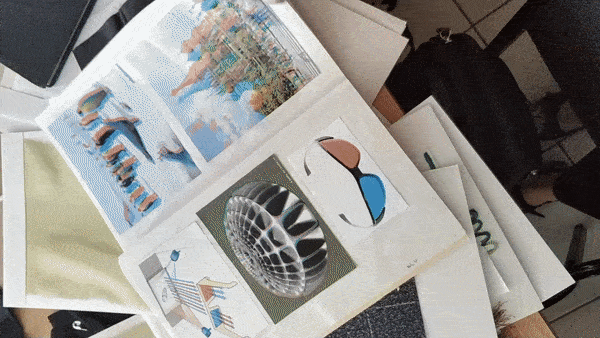
Over the 40 years of its history, the Omsk Fashion Design School has developed own original and effective teaching methods. However, fashion and design require continuous evolution, that is, constant destruction of something old for the sake of creating something new. The school used to benefit from this seclusion, but it has recently become detrimental since the school lost its sense of time. Therefore, in terms of urgency, relevance and staying in touch with modern processes, the Moscow school has a certain advantage. The HSE is developing its own methods and a new language of teaching, eagerly searching for new concepts. I find this interesting since I enjoy live, "raw" projects, where you can make changes and look for new solutions. There are many disciplines that I designed from scratch, including all terms, definitions, principles, and methods, which later evolved into proprietary programs. Some disciplines have been detailed down to every phrase, but I am more concerned about the ones that require further investigation. It is very difficult to move forward when nothing new is introduced. We went through that, being a young school, with the entire teaching staff consisting of former graduates. When there is youth, techniques and desire, everything works out eventually. And yet, all techniques must be updated with new examples and modified with account of new processes, conditions, innovations, terminology. Only then they will work.
The Omsk Fashion Design School is currently a solid team of experienced teachers. Any stability like that implies a risk of stagnation. Renewal requires young professionals, who, however, are not attracted by low wages and the large amount of work that is not immediately visible. The school currently exists based on the experience and professionalism of the Costume Design department, but changes are inevitable. Many people ask me if I am going to leave. I do not have any such plans at the moment. Everything is very dear to me here.
The HSE Art and Design School uses very smart tools to attract graduates and sell the profession. While the Omsk university website simply advertises this as the master's degree in design, the Moscow advertising campaign is designed more efficiently, promising that, upon completion of the course, even without specialized training, its graduates will be able to create an own brand of clothing, etc. In Moscow, there are constant collaborations with brands, manufacturers and the mass market, which make the students face actual tasks and bring the educational process as close as possible to their future professional environment. The most long-term collaboration is with Uniqlo. The first time, the brand offered us the recycling theme. They sent 38 boxes of clothes and said: "Do what you want with them." This collaboration still continues. We cannot know what other projects we may have or what tasks will be set by Zara, for example. There are talks about collaborations with musicians; it would be interesting to work with Grechka and Monetochka. It is great that the Moscow school is so full of life.
This is where the Omsk school loses in dynamics, but, on the other hand, its provincial city pace facilitates immersion, elaboration, and thoroughness. There are contests, exhibitions, and projects that contribute to professional skills through well-developed methods and quality of information. The professional training programs cover clothing design, creation of an own brand; we have a unique course on knitwear. And yet, for some reason, we are very modest in promoting ourselves. Moreover, the Omsk school provides state-subsidized master's and bachelor's programs.
The Omsk Fashion Design School is currently a solid team of experienced teachers. Any stability like that implies a risk of stagnation. Renewal requires young professionals, who, however, are not attracted by low wages and the large amount of work that is not immediately visible. The school currently exists based on the experience and professionalism of the Costume Design department, but changes are inevitable. Many people ask me if I am going to leave. I do not have any such plans at the moment. Everything is very dear to me here.
The HSE Art and Design School uses very smart tools to attract graduates and sell the profession. While the Omsk university website simply advertises this as the master's degree in design, the Moscow advertising campaign is designed more efficiently, promising that, upon completion of the course, even without specialized training, its graduates will be able to create an own brand of clothing, etc. In Moscow, there are constant collaborations with brands, manufacturers and the mass market, which make the students face actual tasks and bring the educational process as close as possible to their future professional environment. The most long-term collaboration is with Uniqlo. The first time, the brand offered us the recycling theme. They sent 38 boxes of clothes and said: "Do what you want with them." This collaboration still continues. We cannot know what other projects we may have or what tasks will be set by Zara, for example. There are talks about collaborations with musicians; it would be interesting to work with Grechka and Monetochka. It is great that the Moscow school is so full of life.
This is where the Omsk school loses in dynamics, but, on the other hand, its provincial city pace facilitates immersion, elaboration, and thoroughness. There are contests, exhibitions, and projects that contribute to professional skills through well-developed methods and quality of information. The professional training programs cover clothing design, creation of an own brand; we have a unique course on knitwear. And yet, for some reason, we are very modest in promoting ourselves. Moreover, the Omsk school provides state-subsidized master's and bachelor's programs.
ON RELATIONS BETWEEN STUDENTS AND TEACHERS
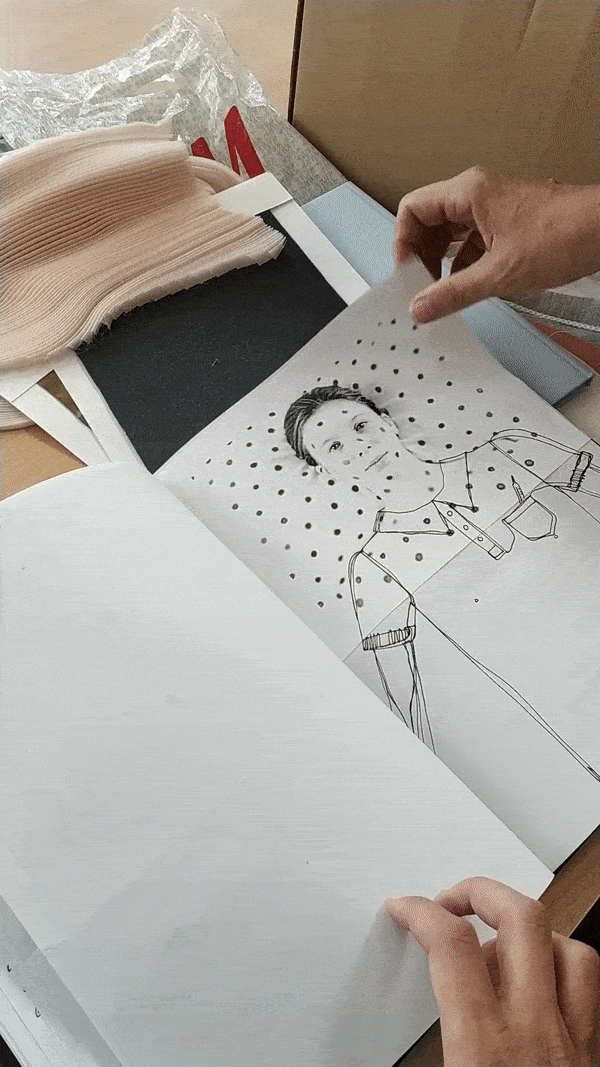
Teachers draw students' attention to changes in the fashion industry and develop the skill to notice such changes. In Omsk, I had a student, Masha, with whom we used to discuss all fashion shows. Like me, Masha is a true fashion show maniac; we are always waiting on the edge of our seats and watch every interesting collection online. I remember when Celine released furry sandals for the first time; I had that feeling of volume like when you put shoe covers over your shoes in a hospital. And I said: "Masha, the collection is good, but the shoes are weird." And she agreed. After some time, it became obvious that these weird or even "terrible" shoes reflect the new aesthetics.
THIS TAUGHT ME TO AVOID THIS TEACHER'S KNOW-IT-ALL BEHAVIOUR. ALWAYS LEAVE ROOM FOR DOUBT. THE WORST THING IS WHEN YOU GET TOO CONFIDENT IN YOUR PERCEPTION AND SET IT AS THE STANDARD. ONE SHOULD ALWAYS REMEMBER THAT THERE ARE NO STANDARDS AND IT IS THE YOUNG WHO DICTATE THE NEW AESTHETICS
A teacher may direct them, identify certain priorities, formulate questions, and express his or her opinion, but must always give them the freedom of choice. I can honestly say that, over time, I started spending more and more time on preparation for my classes because certain things change so drastically that it makes you doubt and think different.
I do not hesitate to tell my students when the exercise I offer is an experiment and I do not know how it may go. For example, my favourite program right now is the one on shaping and plastic modelling because it is the most difficult to comprehend. We are taught from our birth to think in 2D, while a costume is a spatial structure, made in 3D.The brain simply refuses to think in that way. It does not understand this and finds this difficult; and when something is difficult, it wants to run away and hide from it. Postgraduate students who entered a master's program after a bachelor's program are already specialists with higher education, but when they come across something they do not yet know or fail to understand, this where their brains really start to hurt. This is when the educational process begins, when something new is born.
The mentor has a special role in this process. I once had a discussion with Anzor Kankulov over the concepts of actualizers and manipulators used in psychology. Both groups push people towards certain actions, but a manipulator creates such conditions when it seems to the student that without this person the project would fail. It is always great when you have such an unconditional leader at the institute to lead you, but after you graduate, you may have a problem working in the professional environment without this person. An actualizer, on the contrary, is a person who creates the conditions in which the student feels that he or she did everything on his or her own. In this case, the only risk is that the student may get star-struck. Otherwise, this is a much better option, because when students believe they did everything themselves, they will be able to later recollect the procedure and continue to work independently. Here, the teacher deliberately takes the backseat. I find this strategy much more appealing.
The student body is an absolutely sincere environment where you cannot lie about anything. If you are bored, they will immediately see that. It is similar to massage: the massage therapist has to enjoy the process and feel the client's mood. The same is here. When I realize that I am bored and not interested any more, it will be a signal that it is time for me to quit the job.
I do not hesitate to tell my students when the exercise I offer is an experiment and I do not know how it may go. For example, my favourite program right now is the one on shaping and plastic modelling because it is the most difficult to comprehend. We are taught from our birth to think in 2D, while a costume is a spatial structure, made in 3D.The brain simply refuses to think in that way. It does not understand this and finds this difficult; and when something is difficult, it wants to run away and hide from it. Postgraduate students who entered a master's program after a bachelor's program are already specialists with higher education, but when they come across something they do not yet know or fail to understand, this where their brains really start to hurt. This is when the educational process begins, when something new is born.
The mentor has a special role in this process. I once had a discussion with Anzor Kankulov over the concepts of actualizers and manipulators used in psychology. Both groups push people towards certain actions, but a manipulator creates such conditions when it seems to the student that without this person the project would fail. It is always great when you have such an unconditional leader at the institute to lead you, but after you graduate, you may have a problem working in the professional environment without this person. An actualizer, on the contrary, is a person who creates the conditions in which the student feels that he or she did everything on his or her own. In this case, the only risk is that the student may get star-struck. Otherwise, this is a much better option, because when students believe they did everything themselves, they will be able to later recollect the procedure and continue to work independently. Here, the teacher deliberately takes the backseat. I find this strategy much more appealing.
The student body is an absolutely sincere environment where you cannot lie about anything. If you are bored, they will immediately see that. It is similar to massage: the massage therapist has to enjoy the process and feel the client's mood. The same is here. When I realize that I am bored and not interested any more, it will be a signal that it is time for me to quit the job.
ON
MODERN AESTHETICS
MODERN AESTHETICS
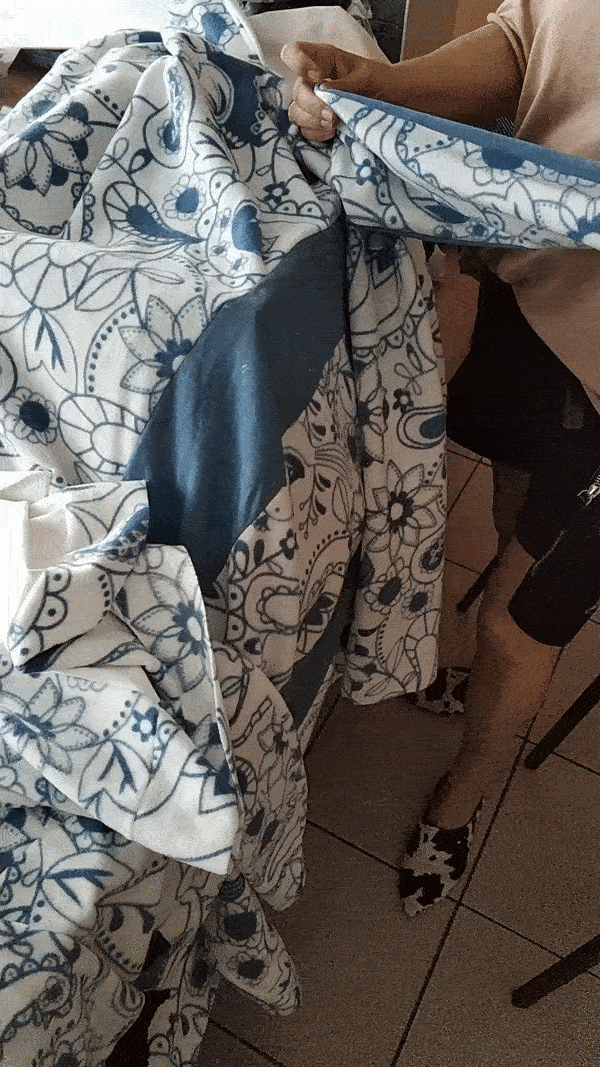
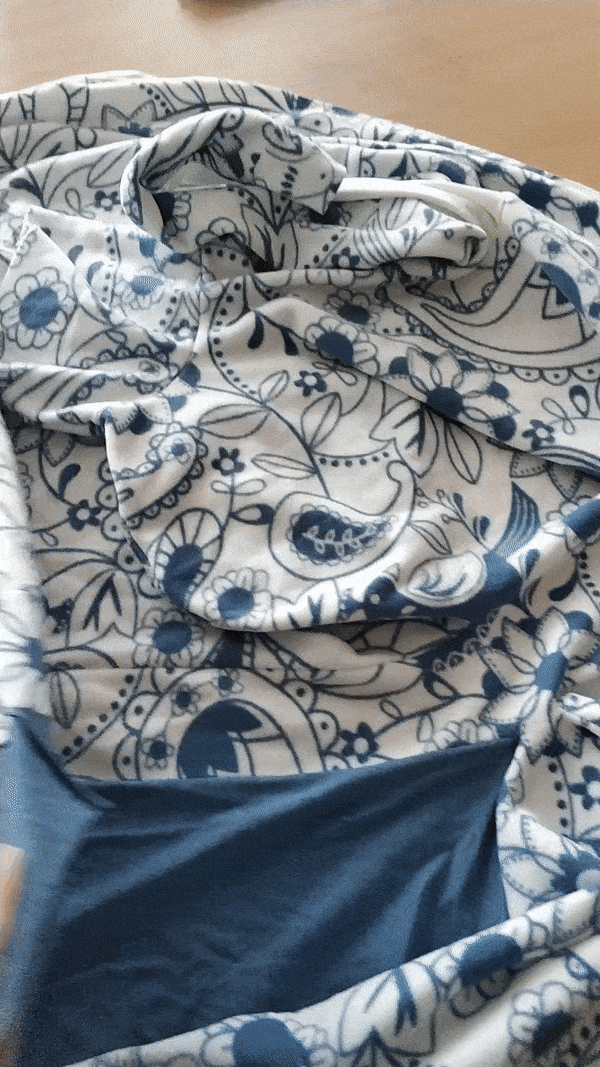
Modern fashion is all about destruction: the established canons of beauty are destroyed, a new aesthetics, a new language, new concepts are being formed. The awful beautiful is the most frequent definition of everything new; all new terms are like an oxymoron which combines the incompatible.
In his lectures, Andrey Abolenkin expresses my feelings on this quite perfectly, stating that today, fashion is in the same state as art was 100 years ago. At that time, new art concepts were emerging, a new language and aesthetics were formed, which required new terminology.
In his lectures, Andrey Abolenkin expresses my feelings on this quite perfectly, stating that today, fashion is in the same state as art was 100 years ago. At that time, new art concepts were emerging, a new language and aesthetics were formed, which required new terminology.
WHEN SPEAKING OF THE MODERN VISUAL LANGUAGE IN FASHION, THE WORD "UGLY" IS OFTEN USED. THIS AESTHETICS IS INHERENTLY DIFFERENT FROM ITS PREDECESSOR. AGAINST ITS BACKGROUND, MY FAVOURITE BRANDS, SUCH AS CELINE, JIL SANDER, DRIES VAN NOTEN, ARE NOW REGARDED AS THE CLASSICS, WHILE EVERYTHING NEW IN FASHION IS ALMOST ALWAYS ABOUT PROVOCATION
There are laws of composition; there are rules for building a collection; there are concepts of beauty and harmony. Fashion collections of the 90s demonstrate a gradual development of shape, colour, and decor; there is some kind of contrast, and harmonizing accents make it easy to analyze. Today, fashion uses other resources: it destroys, violates, tears apart, shifts accents and meanings. When Vetements demonstrate a collection, the first impression is that it is a random combination of clothes and models, a violation of all readable compositional links. You get the feeling of an internal contradiction, and this is interesting. These collections are built according to new rules, in a new assembly format, merged by contexts. This does not negate the basic knowledge since you need to know the rules to violate them, but it gives new application vectors for this knowledge.
This year, while talking to students, I suddenly realized that the word "trend" seems a bit outdated. Being in a trend is somehow not relevant anymore, and the word itself is no longer fashionable. It has become secondary and it feels like we need to find a new definition for this concept. Perhaps this may be compared with the disappearance of the word "avant-garde" from the fashion world. There is a need to change the wording, and I like that.
This year, while talking to students, I suddenly realized that the word "trend" seems a bit outdated. Being in a trend is somehow not relevant anymore, and the word itself is no longer fashionable. It has become secondary and it feels like we need to find a new definition for this concept. Perhaps this may be compared with the disappearance of the word "avant-garde" from the fashion world. There is a need to change the wording, and I like that.
ON
PROFESSIONALISM
IN FASHION
PROFESSIONALISM
IN FASHION
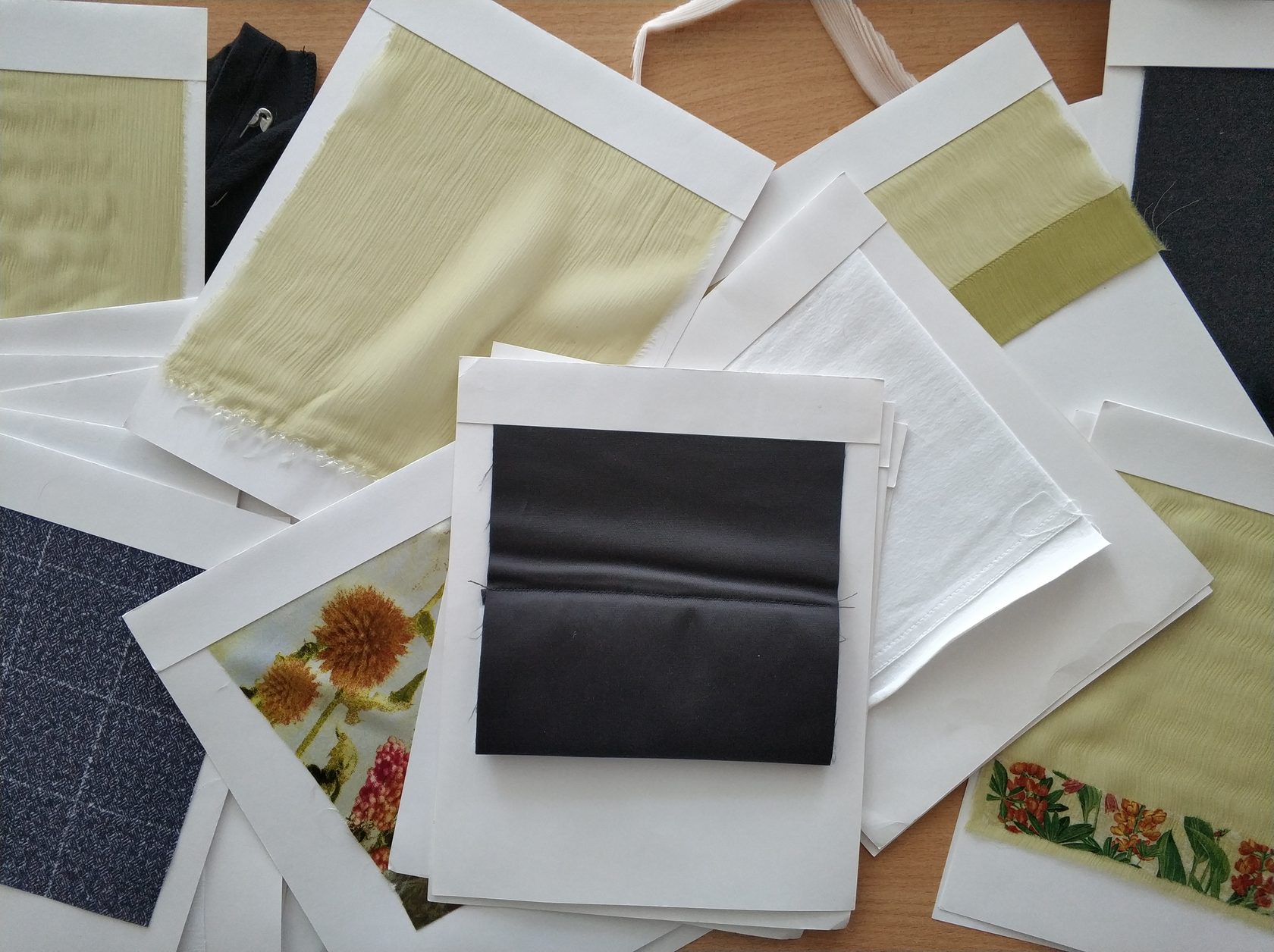

In the recent season, Calvin Klein presented a collection with balaclavas.
WHEN MY FIRST-YEAR STUDENTS PRESENTED A COLLECTION WITH BALACLAVAS FOR A CONTEST, THE JURY MEMBERS GAVE NEGATIVE REVIEWS ON THIS ACCESSORY, SAYING IT WAS ALL PUSSY RIOT. IT IS TERRIBLE WHEN YOU ARE EVALUATED IN SUCH NARROW CATEGORIES AT PROFESSIONAL EVENTS
I hope that this was not said by a fashion expert, but by an organizer or a sponsor. Non-professionals tend to perceive the new as ugly, thinking in familiar, everyday patterns. Therefore, you should always look at the number of professionals in the jury of fashion competitions.
The difference between a professional and a non-professional is in the span of attention. This term is borrowed from the martial arts, but it is perfectly suitable for defining professionalism in any field. In a red blouse, a non-professional will only see a red blouse, while a professional evaluates the silhouette, the form, the quality of the red, and the accessories, i.e. all those aspects that affect the perception. The span of attention is a skill that may be developed.
The difference between a professional and a non-professional is in the span of attention. This term is borrowed from the martial arts, but it is perfectly suitable for defining professionalism in any field. In a red blouse, a non-professional will only see a red blouse, while a professional evaluates the silhouette, the form, the quality of the red, and the accessories, i.e. all those aspects that affect the perception. The span of attention is a skill that may be developed.
ON FILM 55 ABOUT THE OMSK FASHION DESIGN SCHOOL
Honestly, I did not like the movie that much. I see a set of clichés and market-oriented features. Had it been made in 1997, when Alexander Vasilyev came here for the first time with the prejudice that he would have to watch a show for old ladies and found a strong, modern design school, that would have been a different thing. A bucolic wooden house is not longer a symbol of the modern Omsk, but the film was shot in March and April, when the first thing you see around is dirty puddles. When one comes to Omsk after Moscow, the difference in financing is striking, but there is no such contrast in fashion.
In the 90s, it was possible to use the contrast between a wooden house and fashion photography, it could have seemed fresh. This type of exotic was aimed at the foreign audience. For me, it seems too contrived. As Sonya Suntsova correctly noted in this film: "Omsk is, first of all, its people." And I agree with her: for me, a person is absolutely beautiful in his or her work; look at how passionate a professional driver or builder is...I understand that fashion requires a more elaborate image, a more theatrical format. However, this film resembles the conventional decorations shown in Lars von Trier's Dogville. And I like his Nymphomaniac more.
In the 90s, it was possible to use the contrast between a wooden house and fashion photography, it could have seemed fresh. This type of exotic was aimed at the foreign audience. For me, it seems too contrived. As Sonya Suntsova correctly noted in this film: "Omsk is, first of all, its people." And I agree with her: for me, a person is absolutely beautiful in his or her work; look at how passionate a professional driver or builder is...I understand that fashion requires a more elaborate image, a more theatrical format. However, this film resembles the conventional decorations shown in Lars von Trier's Dogville. And I like his Nymphomaniac more.
ON HOW
TO KEEP TRACK
OF THE NEW
TO KEEP TRACK
OF THE NEW
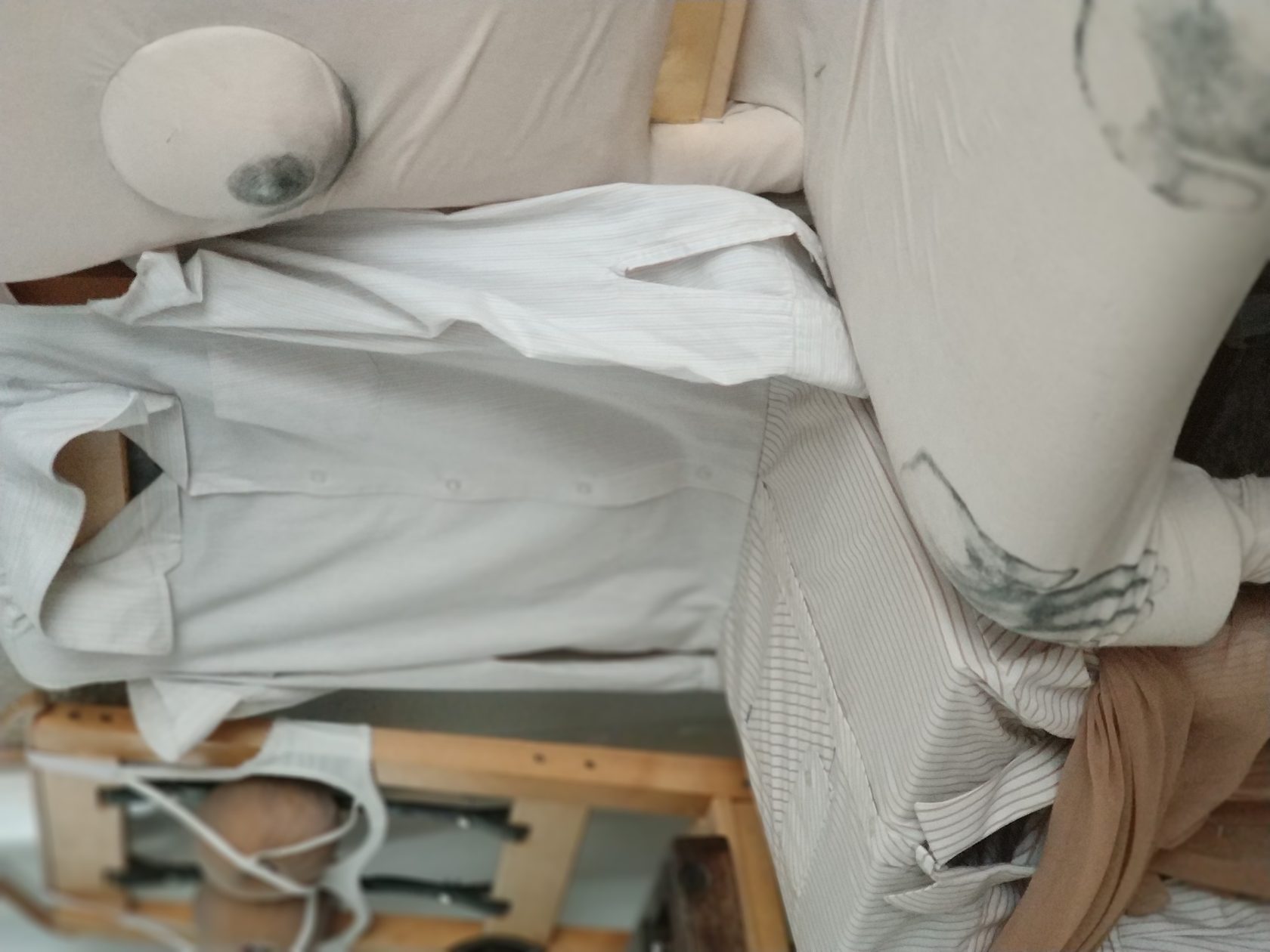
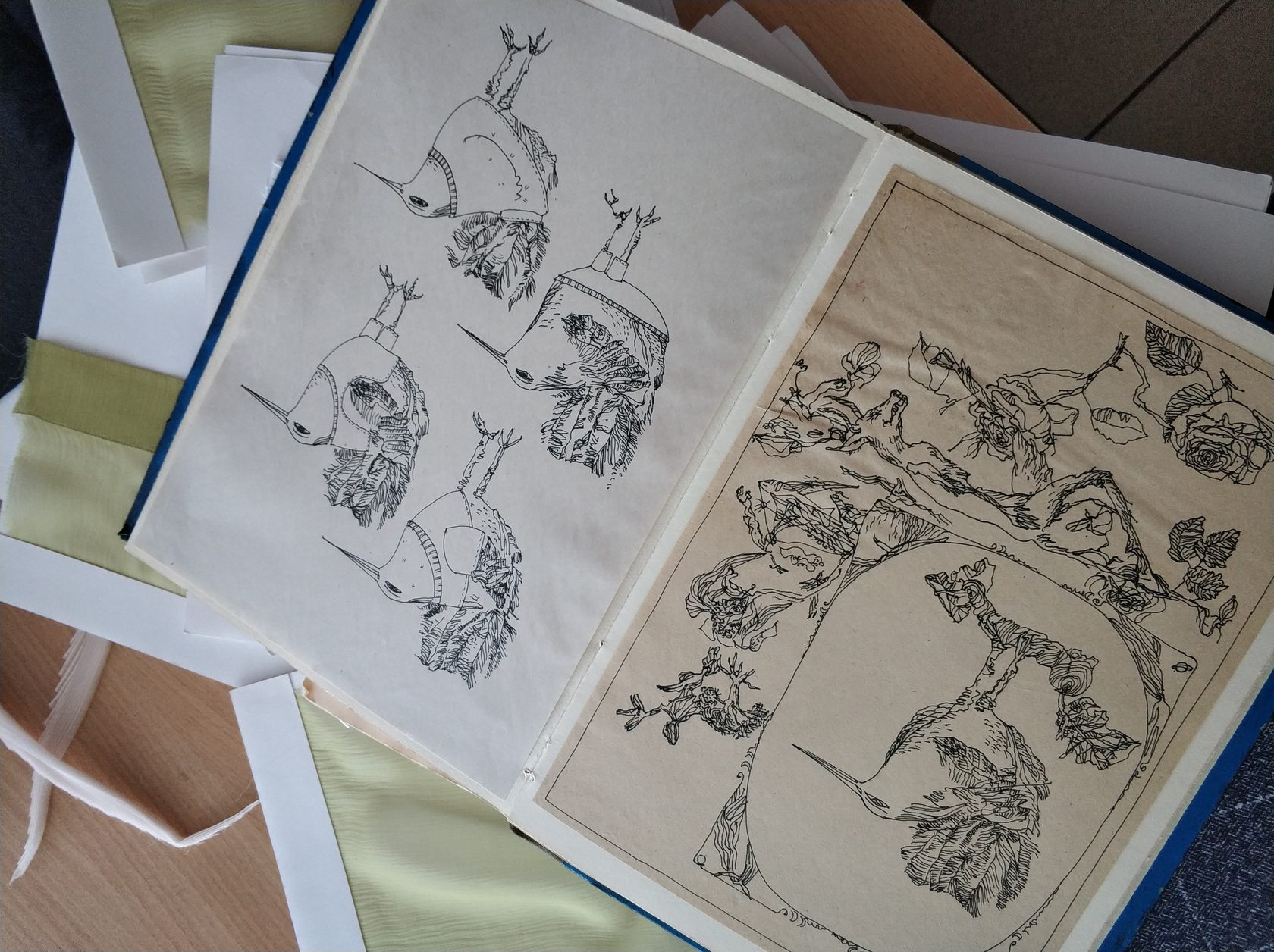
Everything changed with the wide accessibility of information and the ability to travel. Previously, you had to go Europe to see and feel the clothes, to analyze the designs. These observations would then evolve into certain techniques. Today, there is no such isolation and it only depends on you if you are ready to use the available information. The difference is simply in the desire to do it. When you have been doing something for 30 years, you start believing that you already know everything, which may be true for people professionally hammering nails or driving a tram, who I also respect. However, in design, culture, aesthetics, and fashion — echoing respective social processes — continuous internal work, development, and renewal are necessary.
When I am in Moscow, I meet with our graduates who are already working in many fashion houses, such as Ulyana Sergeenko, Terekhov, Akhmadullina, Victoria Andreyanova, Sorry I'm Not, Walk of Shame, Edem Couture, Ostin. Some have their own brands. They are the sources of information I use in my current programs on Creating Your Own Brand and Commercial Collection. Their experience is very valuable, because there is no single rule in this business, only individual specifics. In the classroom, we talk about all this and analyze it using specific cases.
In Omsk, in the framework of the Commercial Collection course, I usually take students on tours to see our local Omsk brands and studios, such as Alexander Bogdanov, Zalesov and Skok and Forma.
Alexander Bogdanov has a successful brand and an interesting creation history. He was ahead of his time creating a European-style factory using a unique technology with textile fabric and knitwear combined in a single unit. This is a very complex, basically unprecedented technology. Before Russian fashion became popular, he had to pretend his was a European brand: there was only the abbreviation in the name, and we had no idea this was an Omsk-based company. When the truth came out, we were invited to the production facility and were very much surprised. Every time I visit this factory and see everything from the inside, I admire it in a new way, because of its scale and very high quality. In addition, he created a huge number of jobs, and when he began advertising as a Russian brand, many of our graduates came to work for him. He was very precise in identifying his target audience and intentionally selected these romantic girls and women.
Zalesov and Skok is a small enterprise with a distinctive history and men as the target audience. Forma is a company established by our graduates without any foreign investment, with high professional standards and a perfect sense of style and modern processes in clothing design.
I sometimes advise Moscow students to go to KM20, Tsvetnoy, LeForm, Traffic or Tretyakovsky Proyezd (although the latter is a bit scarier) and study the clothes, carefully turning them inside out and analyzing the sewing. There is always something to learn. Tretyakovsky Proyezd looks too posh, with its guards in formal suits, who are, however, quite nice. In every store, there are devoted consultants, fans of their brand. When we were looking at the Saint Laurent collection, the consultant was very enthusiastic and told us about Anthony Vaccarello, compared his work with the collections of Hedi Slimane. When two enthusiasts meet, they find common ground very quickly. Once, our Omsk graduates took me to the store of 3.14 Project on Trubnaya Street. I was surprised that there were students who had never heard about such stores or were afraid to go in, despite the democratic traffic we saw there. It is all in your head; if you want to know, then go and see it yourself.
When I am in Moscow, I meet with our graduates who are already working in many fashion houses, such as Ulyana Sergeenko, Terekhov, Akhmadullina, Victoria Andreyanova, Sorry I'm Not, Walk of Shame, Edem Couture, Ostin. Some have their own brands. They are the sources of information I use in my current programs on Creating Your Own Brand and Commercial Collection. Their experience is very valuable, because there is no single rule in this business, only individual specifics. In the classroom, we talk about all this and analyze it using specific cases.
In Omsk, in the framework of the Commercial Collection course, I usually take students on tours to see our local Omsk brands and studios, such as Alexander Bogdanov, Zalesov and Skok and Forma.
Alexander Bogdanov has a successful brand and an interesting creation history. He was ahead of his time creating a European-style factory using a unique technology with textile fabric and knitwear combined in a single unit. This is a very complex, basically unprecedented technology. Before Russian fashion became popular, he had to pretend his was a European brand: there was only the abbreviation in the name, and we had no idea this was an Omsk-based company. When the truth came out, we were invited to the production facility and were very much surprised. Every time I visit this factory and see everything from the inside, I admire it in a new way, because of its scale and very high quality. In addition, he created a huge number of jobs, and when he began advertising as a Russian brand, many of our graduates came to work for him. He was very precise in identifying his target audience and intentionally selected these romantic girls and women.
Zalesov and Skok is a small enterprise with a distinctive history and men as the target audience. Forma is a company established by our graduates without any foreign investment, with high professional standards and a perfect sense of style and modern processes in clothing design.
I sometimes advise Moscow students to go to KM20, Tsvetnoy, LeForm, Traffic or Tretyakovsky Proyezd (although the latter is a bit scarier) and study the clothes, carefully turning them inside out and analyzing the sewing. There is always something to learn. Tretyakovsky Proyezd looks too posh, with its guards in formal suits, who are, however, quite nice. In every store, there are devoted consultants, fans of their brand. When we were looking at the Saint Laurent collection, the consultant was very enthusiastic and told us about Anthony Vaccarello, compared his work with the collections of Hedi Slimane. When two enthusiasts meet, they find common ground very quickly. Once, our Omsk graduates took me to the store of 3.14 Project on Trubnaya Street. I was surprised that there were students who had never heard about such stores or were afraid to go in, despite the democratic traffic we saw there. It is all in your head; if you want to know, then go and see it yourself.
WHEN YOU ARE IN THIS DENSELY POPULATED INFORMATION SPACE, IT SEEMS THAT YOU CAN FIND OUT ANYTHING AT ANY TIME, BUT YOU NEVER EXACTLY DO IT. THESE TOURS ARE VERY USEFUL FOR BEGINNERS AS THEY IMPROVE THEIR SKILL OF VISUAL PERCEPTION OF INFORMATION. THIS SKILL IS IMPORTANT FOR ANY PERSON IN THE PROFESSION, BECAUSE EVERYTHING IS CHANGING SO VERY QUICKLY.
ON MODERN AND TRADITIONAL DESIGN
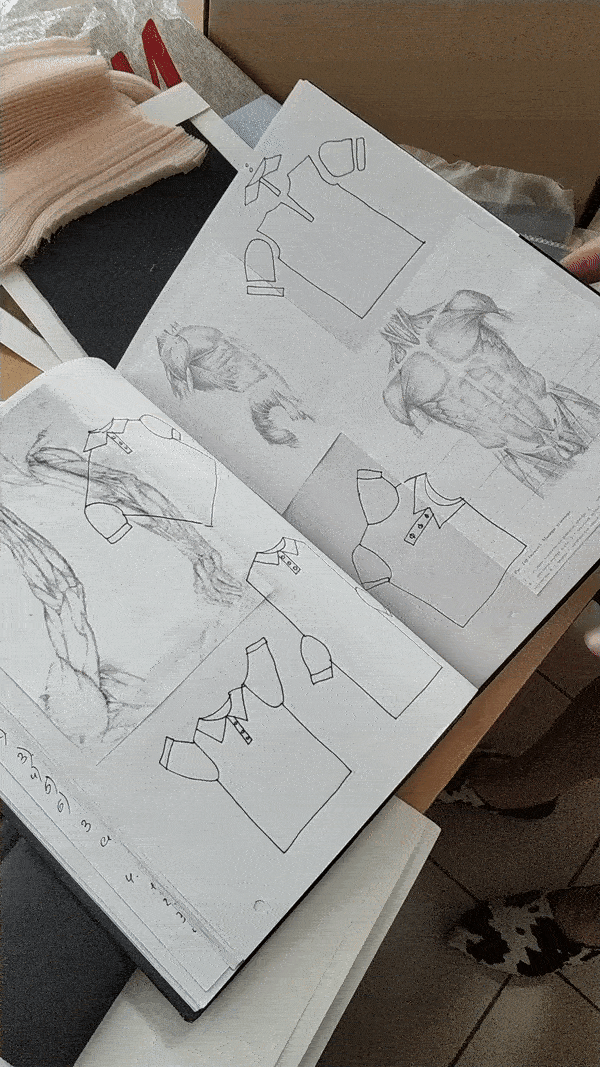
Setting mandatory requirements for sticking to traditions and local designs while inside a certain culture is a restriction of the designer's right to have an own perception of the world. How would you fit Yohji Yamamoto or Junya Watanabe into some narrow ethnic frames? Make them wear and design obi belts? Making references to the folk costume is a way of working with a source, but it does not obligate the designer to stay bound to a certain locality. In Yohji Yamamoto designs, despite his largely European style, you can always recognize the originality in minor details: in colour, in the space of interaction between the costume and the human figure, in the recognizable aesthetics of Wabi-sabi, where the natural is devoid of all artificial. At the same time, there is Rei Kawakubo, working in a completely different manner, and there is Jean-Paul Gautier. I would not call him my favourite designer at the moment, but he was very cool in the 90s.He has this "frenchness" readable at a different level of design codes. How can you consider a sailor's striped vest or a corset to be French? On the one hand, yes, there was Moulin Rouge and the sailors, but they have become so universal!
There will certainly always be a qualitative difference visible for countries with cultures where tabooed themes in costumes exist, but Omsk, Moscow, and Paris generally represent a single cosmopolitan space.
You can always find the balance between the traditional and the modern if you are interested. If not, it will turn out artificial. Subtle references are and have always been more appealing. Embroidering an ornament based on the motifs of the Arkhangelsk wood carving is a one-time project, but it may be transformed into something more solid if you rework it, find different perspectives and elaborate on it.
There will certainly always be a qualitative difference visible for countries with cultures where tabooed themes in costumes exist, but Omsk, Moscow, and Paris generally represent a single cosmopolitan space.
You can always find the balance between the traditional and the modern if you are interested. If not, it will turn out artificial. Subtle references are and have always been more appealing. Embroidering an ornament based on the motifs of the Arkhangelsk wood carving is a one-time project, but it may be transformed into something more solid if you rework it, find different perspectives and elaborate on it.
A COMMERCIAL COLLECTION AT A UNIVERSITY
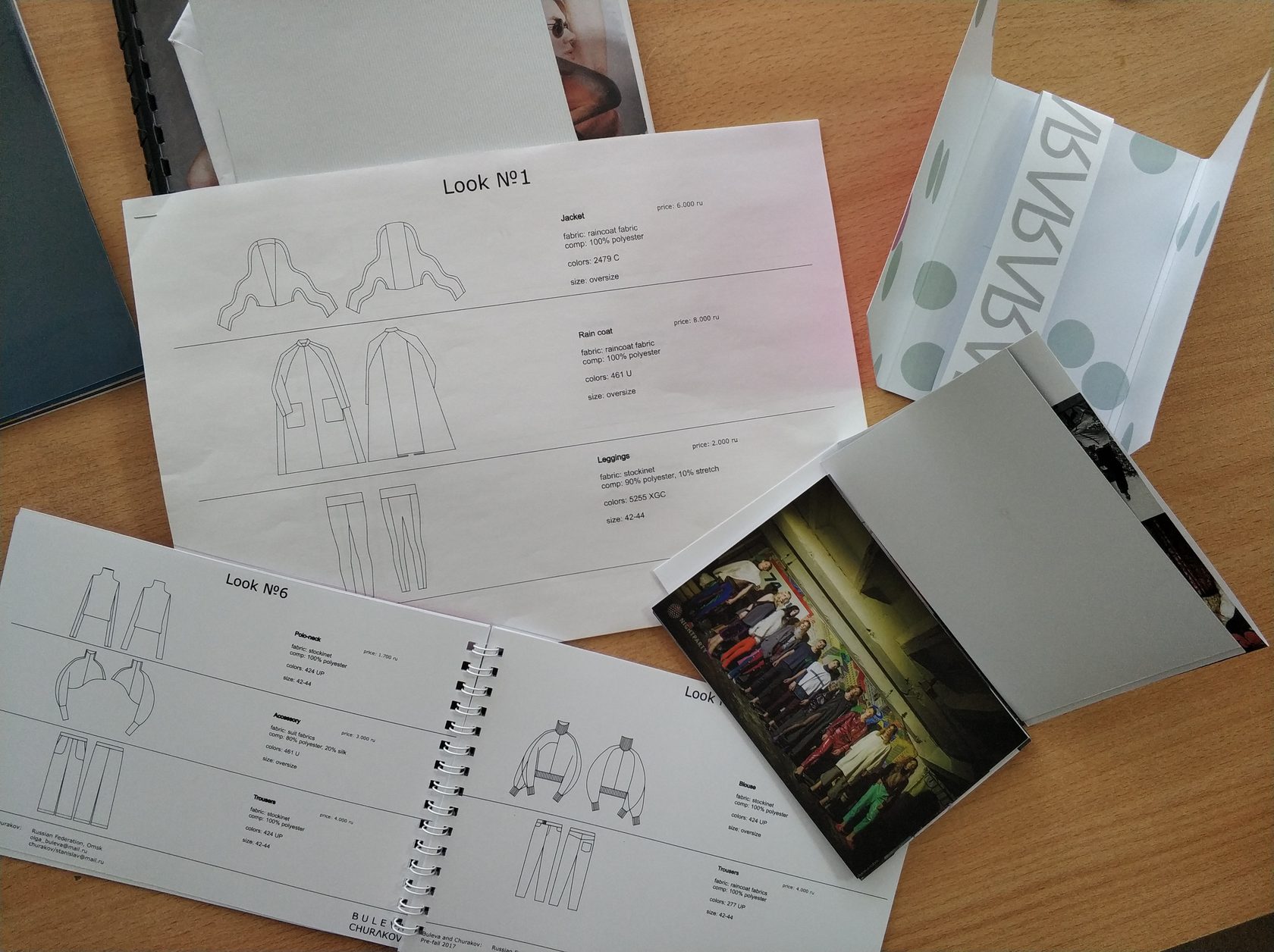

For a long time, we had all been ashamed to talk about money, about the cost of products. Creative art and making money seemed like two absolutely different things. Nowadays, we tell our students that a designer is a profession, which has to generate income. A costume should not just have an aesthetic value; it should provide an opportunity to earn money. In addition to enjoying the creation of clothes, you must understand the commercial processes behind it. These topics are now raised and studied in the master's programs, but I feel it would already be appropriate to discuss this at the bachelor's level. They used to teach us design without teaching how to sell clothes. Today, the fashion industry raises these issues, forcing us to modify the teaching programs and to develop new competencies.
Moscow students are much better at speaking and expressing their thoughts, which is not by chance. During the review run, each student has to defend his or her project, and when you speak, you learn to properly structure the information. In Moscow, a review run means an entire day of discussions, expressing opinions, searching for meanings. This is important for both students and teachers. Here, students are conducting a research, an experiment.
In Omsk, all bachelor programs are practice-oriented, with a focus on the quality of execution and attention to detail. Under the master's programs, all practical tasks are accompanied by research. I apply the Moscow experience in Omsk, insisting that students have to defend their work and learn to draw adequate conclusions.
The Commercial Collection course covers so many aspects that we sometimes exceed the time limits for the classes. Half of the semester gets taken up by me voicing the important information, including on how stores like Collette were created, on new brands and companies, on promotion, pricing, target audience, positioning, etc. As part of the same course, we try to select the niche for each designer.
Moscow students are much better at speaking and expressing their thoughts, which is not by chance. During the review run, each student has to defend his or her project, and when you speak, you learn to properly structure the information. In Moscow, a review run means an entire day of discussions, expressing opinions, searching for meanings. This is important for both students and teachers. Here, students are conducting a research, an experiment.
In Omsk, all bachelor programs are practice-oriented, with a focus on the quality of execution and attention to detail. Under the master's programs, all practical tasks are accompanied by research. I apply the Moscow experience in Omsk, insisting that students have to defend their work and learn to draw adequate conclusions.
The Commercial Collection course covers so many aspects that we sometimes exceed the time limits for the classes. Half of the semester gets taken up by me voicing the important information, including on how stores like Collette were created, on new brands and companies, on promotion, pricing, target audience, positioning, etc. As part of the same course, we try to select the niche for each designer.
A COMMERCIAL COLLECTION DOES NOT ALWAYS HAVE TO CONSIST OF TRADITIONAL SWEATSHIRTS. IMAGINE THAT THERE IS A GROUP OF MEN DESPERATE TO BUY FLUFFY PINK ORGANZA PANTS. THERE MAY BE ONLY TEN OF THEM, BUT THESE ARE CUSTOMERS WHO DO NOT KNOW WHERE TO BUY THE PRODUCT. THEY WILL NEED THIS PRODUCT EVERY MONTH AND CONDITIONALLY MAY BE USED AS THE BASIS FOR BUILDING A COMMERCIAL NICHE
For example, every month you will sell 20 pieces of these pink pants. Over some time, you will be able to attract sufficient investments for a larger project. I deliberately carry this example to the point of absurdity in order to demonstrate what clients are possible and where a business idea may be found.
There was a wedding of a couple of transgender people I visited in Los Angeles, and I thought to myself that this was also a special niche of consumers with specific proportions. She, for example, has breasts, but also broad shoulders, with a sporty silhouette, which requires a completely different fit, special additions, etc. It is the same as when Yohji Yamamoto had to adapt the proportions and sizes of his collections for the European market, because Japanese and European women have very different body types.
There was a wedding of a couple of transgender people I visited in Los Angeles, and I thought to myself that this was also a special niche of consumers with specific proportions. She, for example, has breasts, but also broad shoulders, with a sporty silhouette, which requires a completely different fit, special additions, etc. It is the same as when Yohji Yamamoto had to adapt the proportions and sizes of his collections for the European market, because Japanese and European women have very different body types.
WITHIN THE FRAMEWORK OF THE COMMERCIAL COLLECTION PROJECT, OUR STUDENTS ESTABLISH AND ELABORATE THEIR OWN CONCEPTS. WE INVENTED THE TOPIC OF PRICE ELASTICITY IN OUTERWEAR DESIGN (CLIMATE SUBPACKAGE).THIS TOPIC BECAME RELEVANT WITH THE EMERGENCE OF THE NEW VISUAL CODE WHEN A SECOND JACKET IS WORN OVER THE FIRST JACKET OR A WINDBREAKER IS PUT ON TOP OF A COAT, THAT IS, WHEN SEVERAL OUTERWEAR PIECES ARE COMBINED. WE REALIZED THAT IN THE CONDITIONS OF OUR ENDLESS WINTER PEOPLE SIMPLY GET TIRED OF THE OUTERWEAR. YOU CAN ACTUALLY HAVE THREE OUTERWEAR PIECES TO COMBINE THEM IN DIFFERENT WAYS. THE UNIQUENESS OF THIS COMMERCIAL PROPOSAL LIES IN THE COMBINATION AND COMPLEMENTARITY OF TWO OR MORE DIFFERENT OUTERWEAR ITEMS IN A SINGLE FULL-FLEDGED "CLIMATE SUBPACKAGE". THE PRICE ELASTICITY CONCEPT IN THIS CASE MAY BE DESCRIBED AS A COST VARIATION: THAT IS, THE PROPOSED SETS MAY BE BOUGHT COMPLETE, OR YOU CAN BUY PART OF A SET, OR YOU MAY GRADUALLY BUY ADDITIONAL ITEMS, DEPENDING ON YOUR BUDGET
A COMMERCIAL COLLECTION IN REAL LIFE
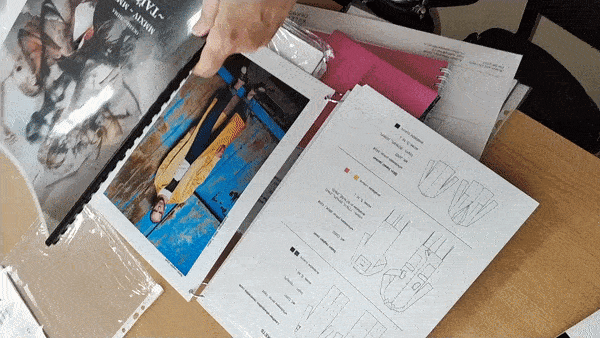
Exhibitions like CPM are mandatory, no matter how outdated they may seem. A commercial collection and a fashion collection are often different things. Like with those pink organza pants, it is clear that this is not about fashion, this is about a narrow target audience. Recently, our graduate Dasha Osipova asked me for an opinion on her brand, which she created after graduation. I replied that she now knows more than me, because the success becomes evident in the sales. Creative solutions developed during the student years may not be compared with what is produced for a specific target audience. Collection buyers always take into account the specifics of the region. Omsk definitely has its own peculiarities. A friend once told me: "If you were to select the product range for my store, I would have zero sales. I acquire this outerwear that will be sold in 20 pieces day, and this is my profit."
These fairs are not about fashion; here, the successful ones often look completely unfashionable. I visited similar exhibitions in Italy, where they had very different clothes, from ordinary women's clothes for everyday wear to very interesting brands. Buyers were lining up for the former. Here, nobody is interested in trendsetters, except for the concept stores like Leform and Colette and multi-brand stores with limited product numbers.
A SELF-SUFFICIENCY FORMULA FOR A CREATIVE PERSON
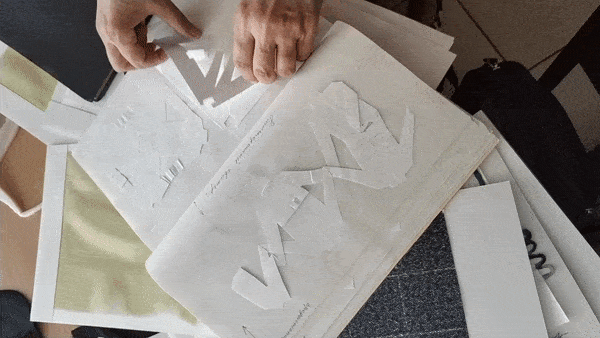

The university gives the same knowledge to all students. Some of them do realize their potential and others don't. This depends on the personality, vision, insight, and energy of each person. I called this the "creative person self-sufficiency formula". It consists of the three components: the brains (the ability to elaborate and calculate things for commercial success), music (the ability to feel and perceive the information received in your own way) and the light bulb (or energy).If you have all three in approximately the same proportions, you can generally create your own brand. If you lack any of them, you will need to assemble a proper team. Suppose you have a lot of energy, then you can attract people with the brains. If you have the brains for calculation, you can hire an old lady from a small village to make unique embroidery and provide the required creativity element.
I formulated this definition when our first graduates left for Moscow, started working and creating own projects. I realized that they had these qualities in the right proportion. They got the same basic knowledge, but the ability to analyze, the desire, and the energy are specific to each particular person. This is what their future will be based on, while the eventual success of their projects will depend on the ability to correctly choose between the pink organza pants and ordinary sweatshirts.
I formulated this definition when our first graduates left for Moscow, started working and creating own projects. I realized that they had these qualities in the right proportion. They got the same basic knowledge, but the ability to analyze, the desire, and the energy are specific to each particular person. This is what their future will be based on, while the eventual success of their projects will depend on the ability to correctly choose between the pink organza pants and ordinary sweatshirts.
TEXT BY TANYA TRETYAKOVA